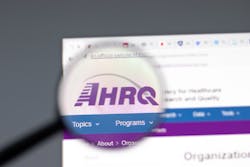As part of the move toward value-based, patient-centered care, the 21st Century Cures Act created new expectations—for data interoperability, and for patient participation in data generation, access, and use. Successful transition to value-based patient-centered care depends, in part, on the translation of patient-provided data into evidence, and the accessibility of that evidence in the form of clinical guidelines that support both patient and clinician in decision-making.
This Viewpoint article highlights recent findings from the Journal of the American Medical Informatics Association (JAMIA) on the technical landscape for patient-centered clinical decision support (PC CDS): progress, gaps, and challenges.[1]
Patient-Centered CDS – What Is It and Why Can It Help?
CDS tools have traditionally disseminated clinical guidelines at the point of care and are typically presented to clinicians rather than patients (clinician-facing). Patient-centered CDS (PC CDS) however, includes a spectrum of interventions based on patient-specific data. Specifically, PC CDS includes at least one of the following four components: 1) evidence derived from comparative effectiveness research on patient-centered outcomes; 2) integration of data generated directly from patients (i.e., patient-generated health data [PGHD], patient-reported outcomes [PROs], patient preferences, and/or non-clinical patient-centric data such as social determinants of health [SDOH]); 3) delivery to patients and their caregivers via apps or patient portals, and to providers via electronic health record (EHR)–based tools; and/or 4) support for shared decision-making—a process whereby patients, caregivers, and care teams share and discuss health information and patients’ values and preferences, in order to reach mutually acceptable health-related decisions.
Key Challenges in Developing Standards for PC CDS
1) Limited adoption of existing standards for translating clinical guidelines into PC CDS. For clinical recommendations to be represented in PC CDS, evidence-based guidelines need to be translated into computable form. Health Level 7 (HL7) standard Clinical Quality Language (CQL) was developed for this purpose. CQL has seen limited adoption by electronic health record (EHR) developers, however, which inevitably limits CQL use—which, in turn, limits the ability for PC CDS to be shared across institutions and different EHR developer platforms.
2) Lack of standards for patient-provided information. Patient-provided information encompasses two broad categories: 1) PGHD from medical devices (e.g., glucometers), wearables (e.g., fitness trackers), apps on smart phones, and PROs; and 2) non-clinical patient-centered data like patient preferences and SDOH. Efforts are under way to standardize collection of PROs and patient preference data. In addition, the Gravity Project has made advances in standardizing several SDOH data domains. However, considerable gaps still exist in PGHD standards, including a demonstrated need for research on developing and piloting standards for PGHD, curating and controlling the flow of PGHD so it is clinically meaningful and actionable, and creating a quality framework for these data types.
3) Limited integration of PGHD into the EHR and other digital health tools. In most cases, PGHD is stored outside the EHR and consequently unavailable for use by PC CDS tools. Clinical integration of PGHD into EHRs has lagged due to lack of infrastructure for receiving and storing PGHD. Current standards for integrating PGHD into EHRs and patient portals are lacking, immature, or not widely adopted. As the methods for delivering PC CDS interventions move toward more patient-facing modalities such as apps and websites, the risk increases that PGHD remains inaccessible to the clinician and cannot be linked to data in the patient’s EHR and evaluated to inform patient-centered care.
4) Little meaningful integration of PC CDS into clinical workflows. Persistent issues remain with integrating PC CDS into clinical workflows, resulting in increased provider burden and limited use of PC CDS. Specialized, standards-based application program interfaces (APIs) like CDS Hooks have been developed to trigger CDS in the clinical workflow. But despite this resource, challenges remain across EHR developers—including inconsistent adoption of the standards and lack of agreement on where to place the CDS trigger points, both of which significantly limit integration of CDS within the clinical workflow.
Addressing the Challenges
The AHRQ-funded Clinical Decision Support Innovation Collaborative (CDSiC) is establishing four workgroups focused on advancing PC CDS. One of these workgroups, the CDS Standards and Regulatory Frameworks Workgroup, is undertaking a current state landscape assessment on standards, regulations, and policies that will inform development of an action plan to advance standards-based PC CDS. This Workgroup will also track activities and engage with external standards groups and regulatory groups, and examine approaches for integrating patient-provided information into EHRs and other health IT systems. In addition, the CDSiC Innovation Center will conduct real-world implementation of standards-based PC CDS. And CDSiC pilot projects and assessments will generate best practice recommendations for measuring diverse aspects of PC CDS implementation.
Prashila Dullabh, M.D., FAMIA, Vice President and Senior Fellow at NORC at the University of Chicago (NORC) and Director of NORC’s Health Implementation Science Center, serves as the Principal Investigator of the Clinical Decision Support Innovation Collaborative (CDSiC) Project. She co-authored this article with Dean Sittig, Ph.D., NORC Senior Fellow and Professor of Biomedical Informatics at the University of Texas Health Sciences Center as well as a Co-Investigator of the CDSiC Project; David Lobach, M.D., Ph.D., M.S., FACMI, Vice President of Health Informatics Research at Elimu Informatics and a Co-Investigator of the CDSiC Project; James Swiger, M.B.E., Health Scientist Administrator in the Division of Digital Healthcare Research in the Center for Evidence and Practice Improvement at the Agency for Healthcare Research and Quality (AHRQ); and Edwin Lomotan, M.D., Chief of Clinical Informatics for the Division of Digital Healthcare Research in the Center for Evidence and Practice Improvement at AHRQ.
[1] The findings presented in the JAMIA article were based on an AHRQ-funded horizon scan to explore the current state of patient-centered clinical decision support (PC CDS) and to identify future directions for research and development. The scan included a literature review, input from a 22-member technical expert panel, and 18 key informant discussions.


